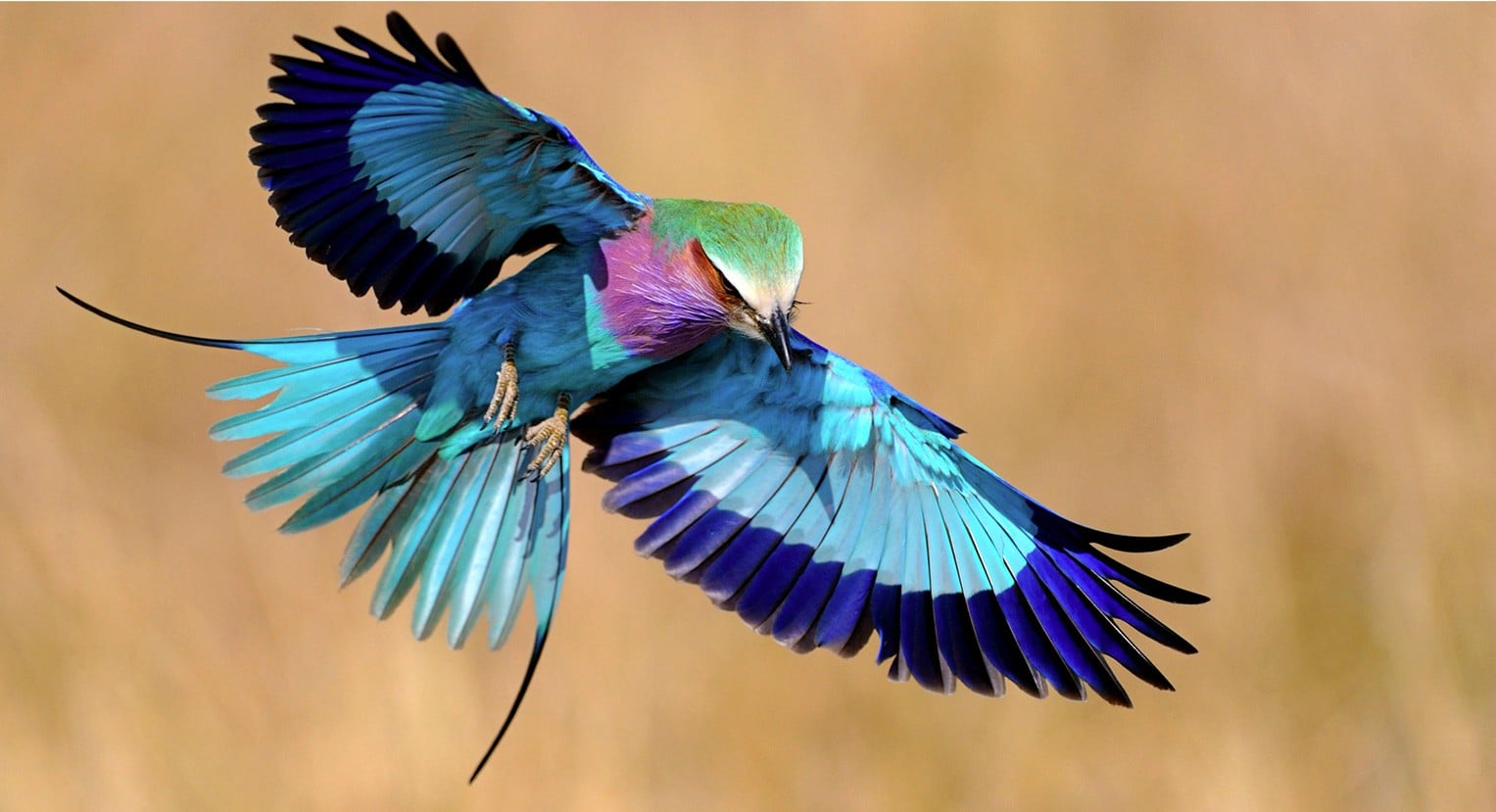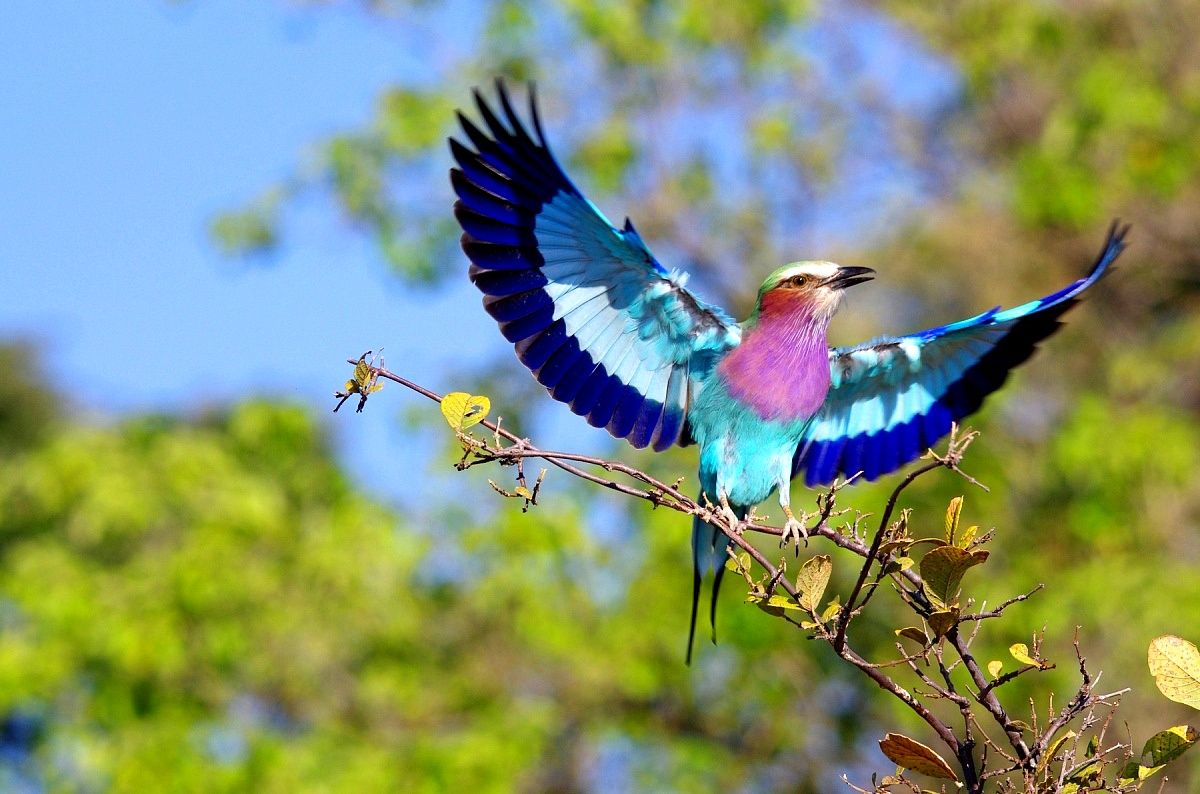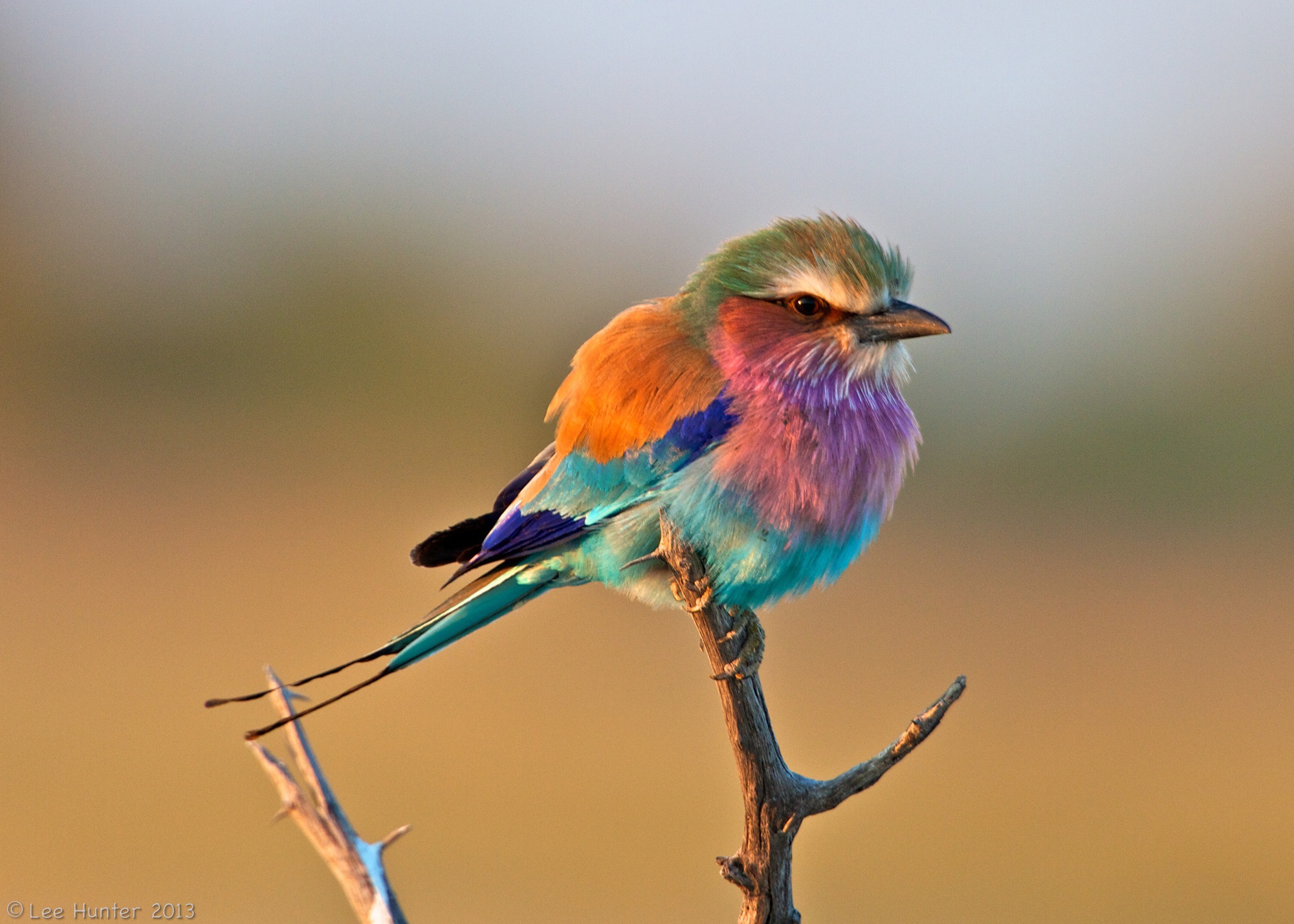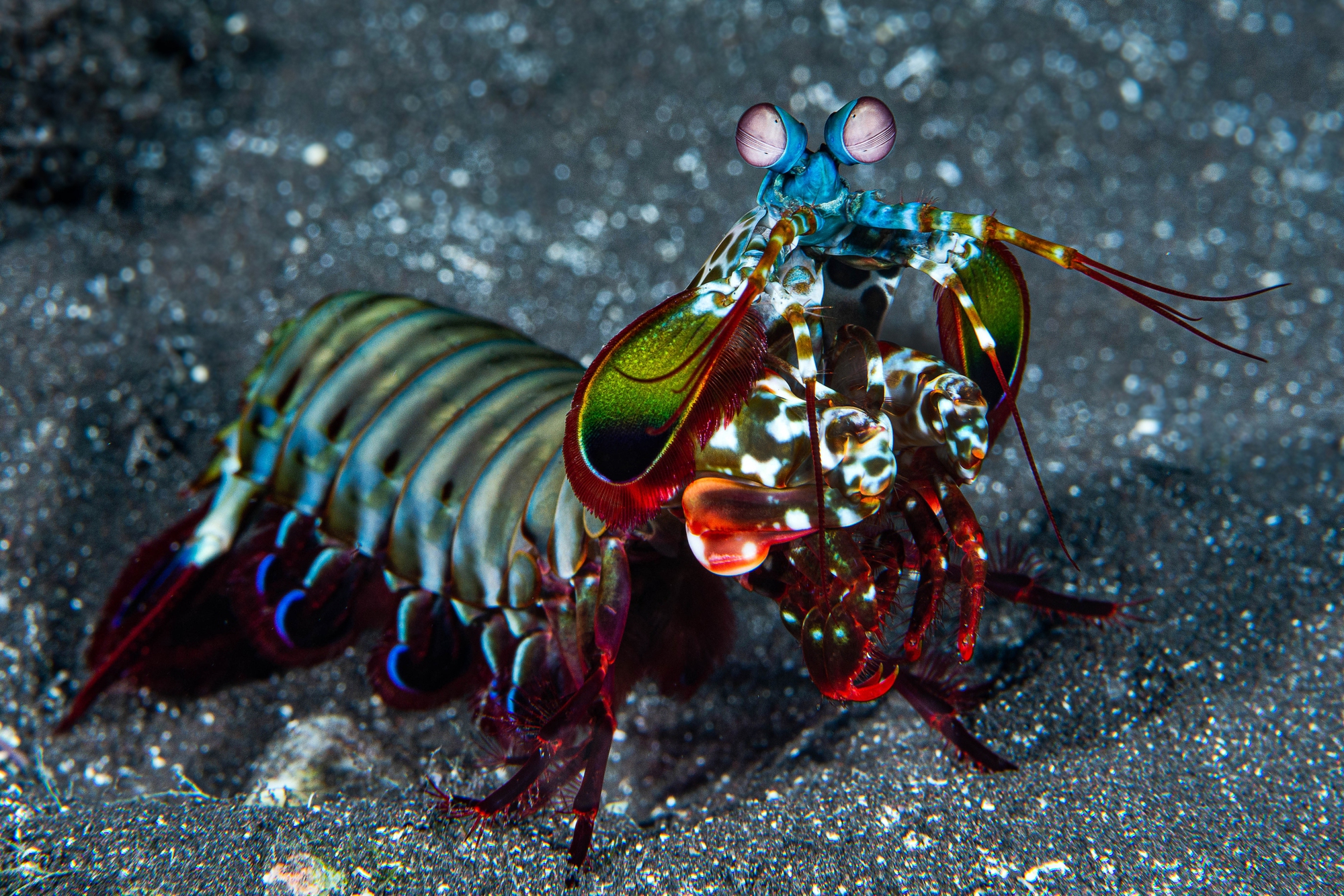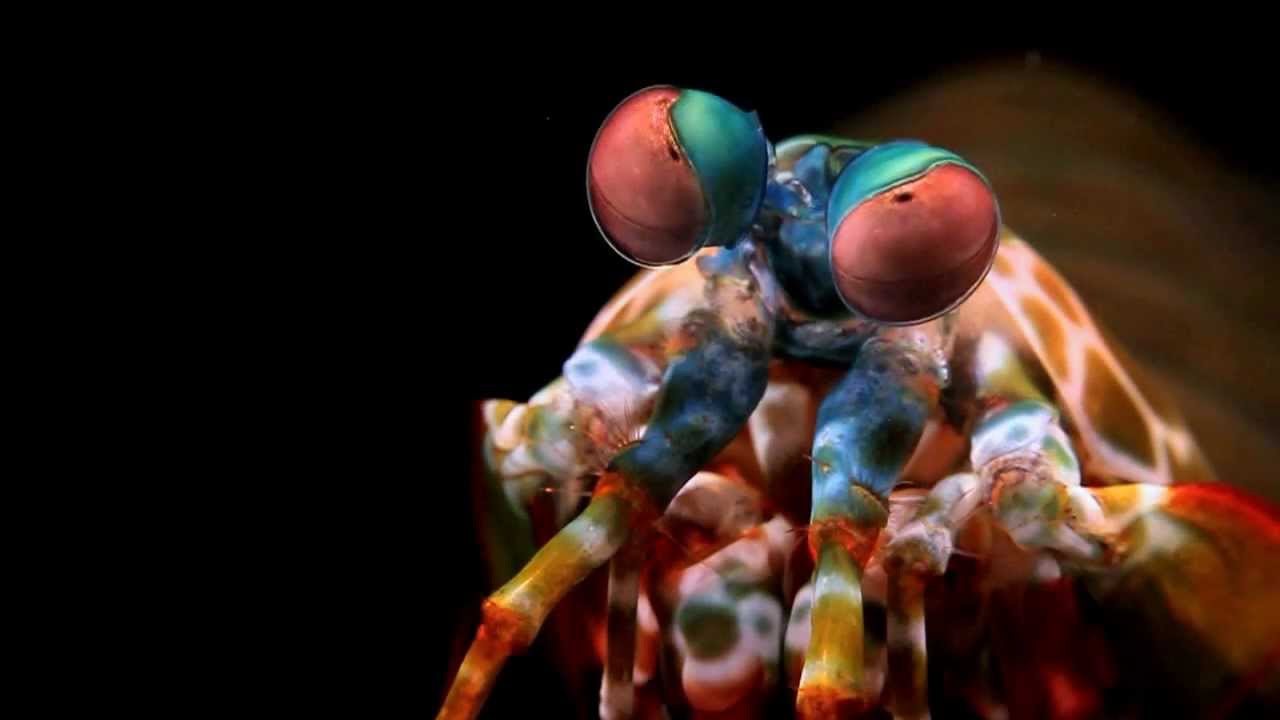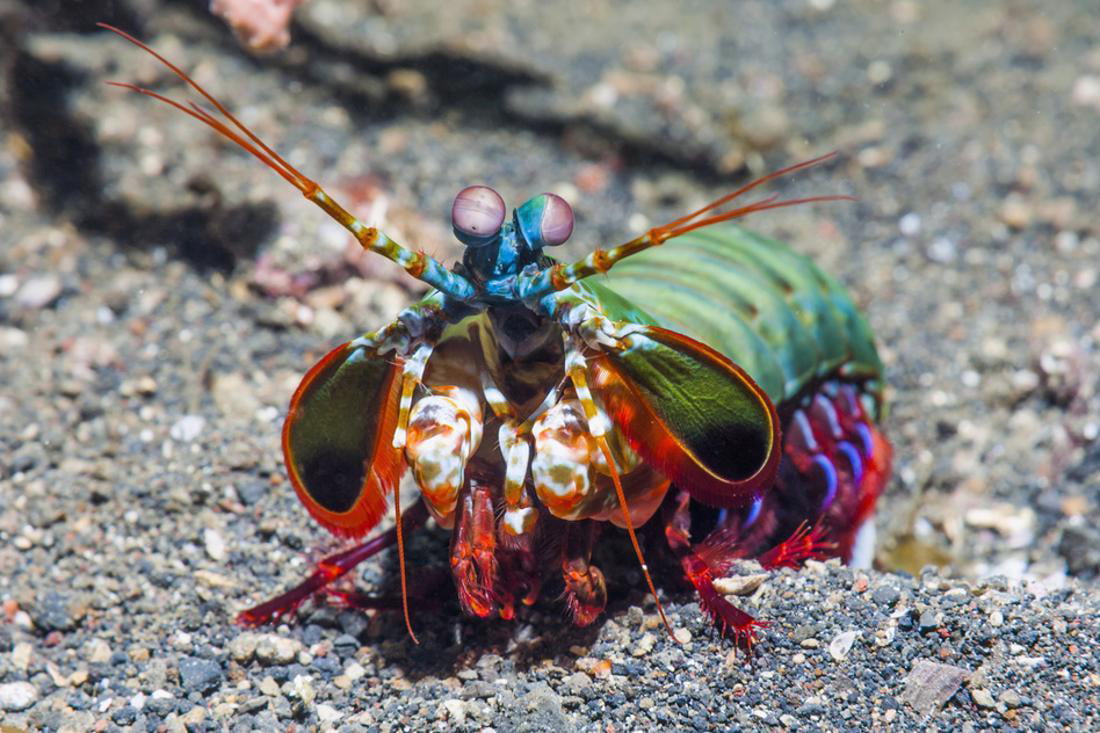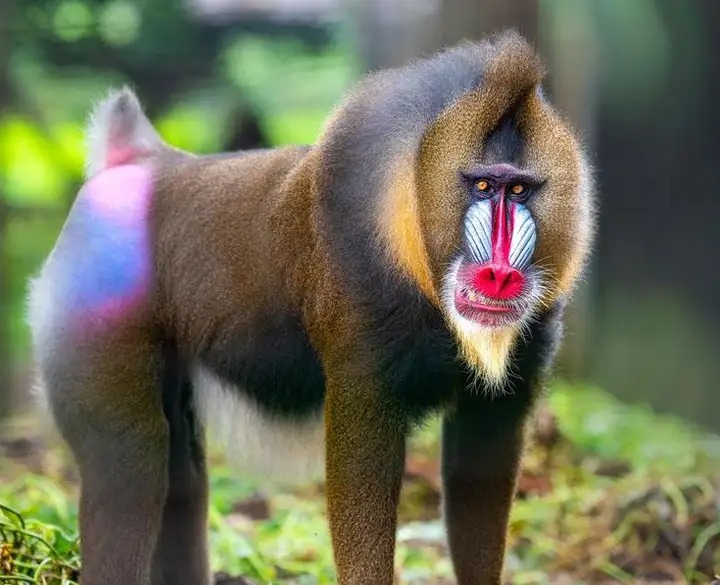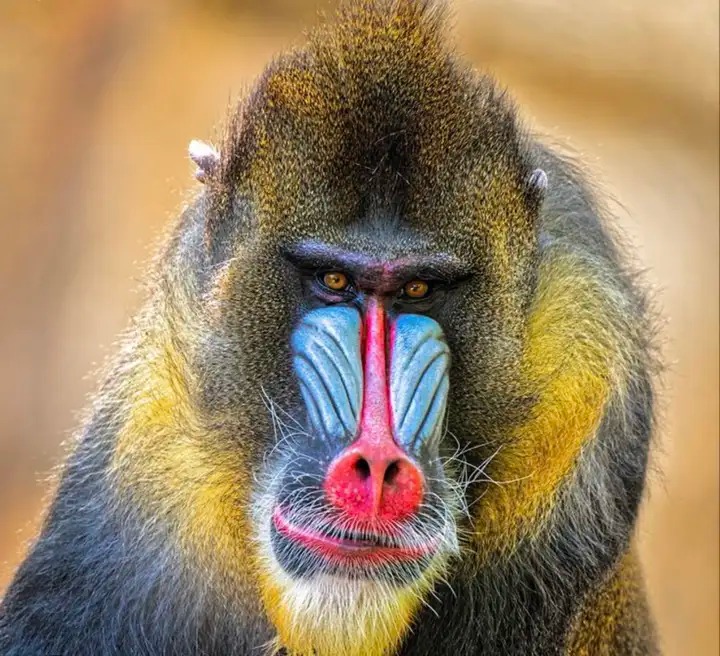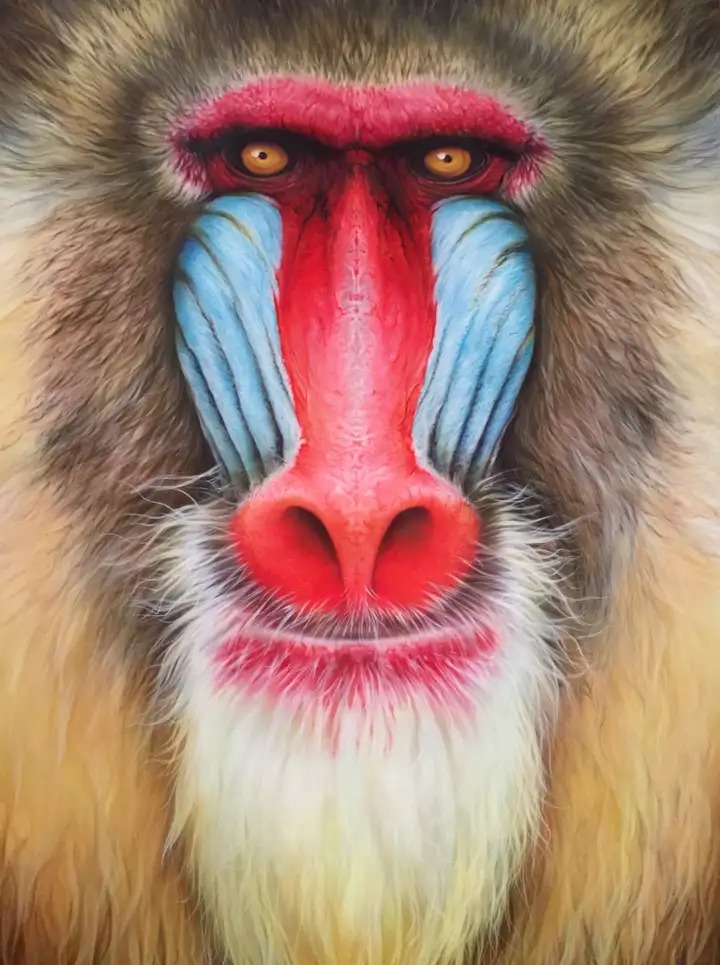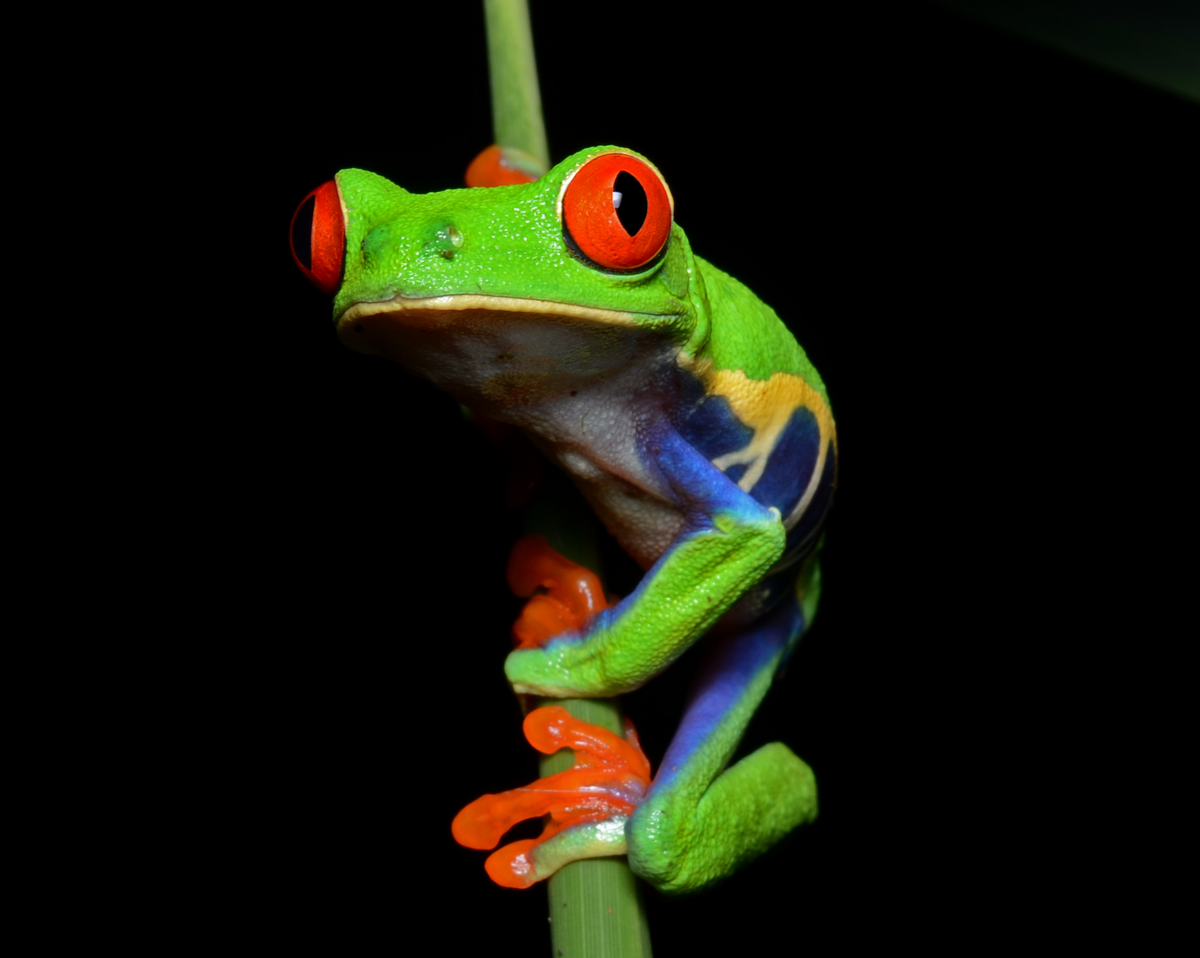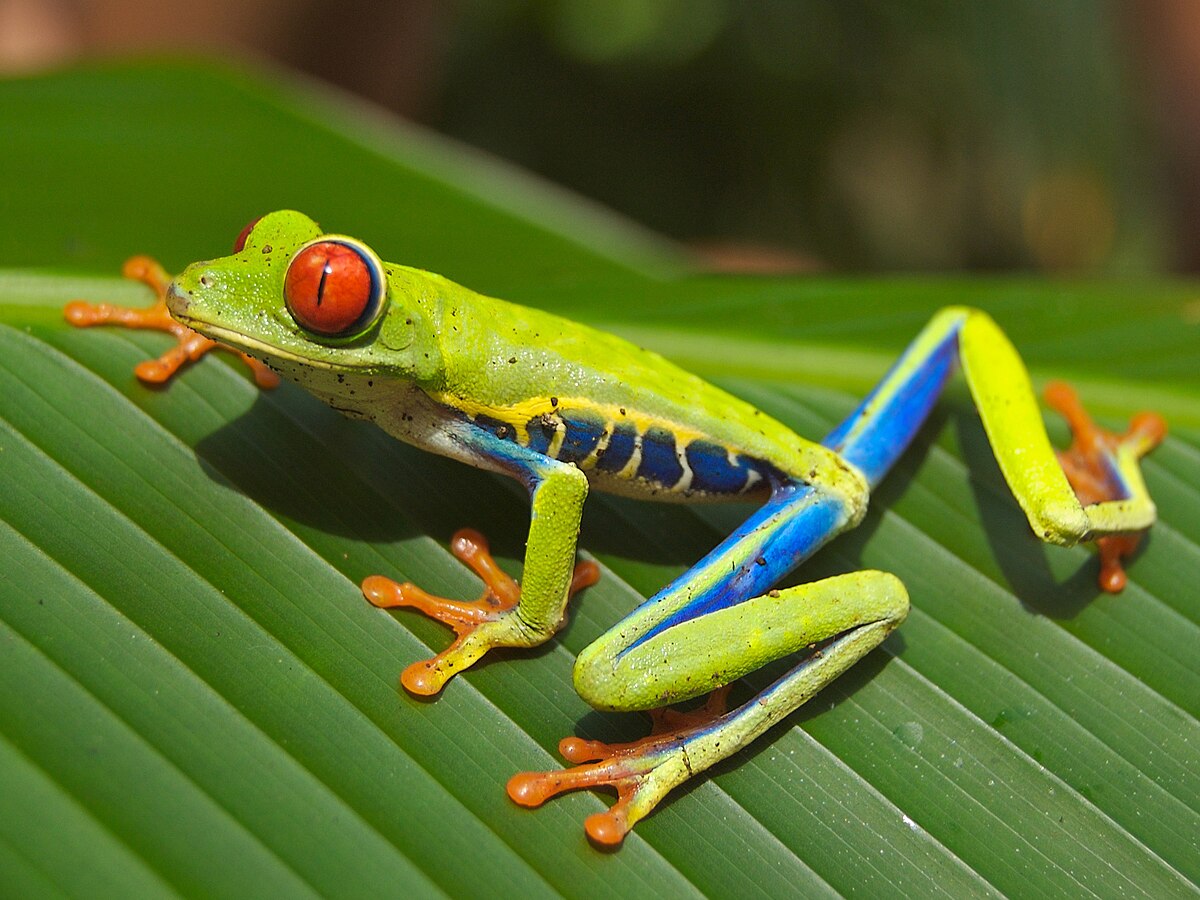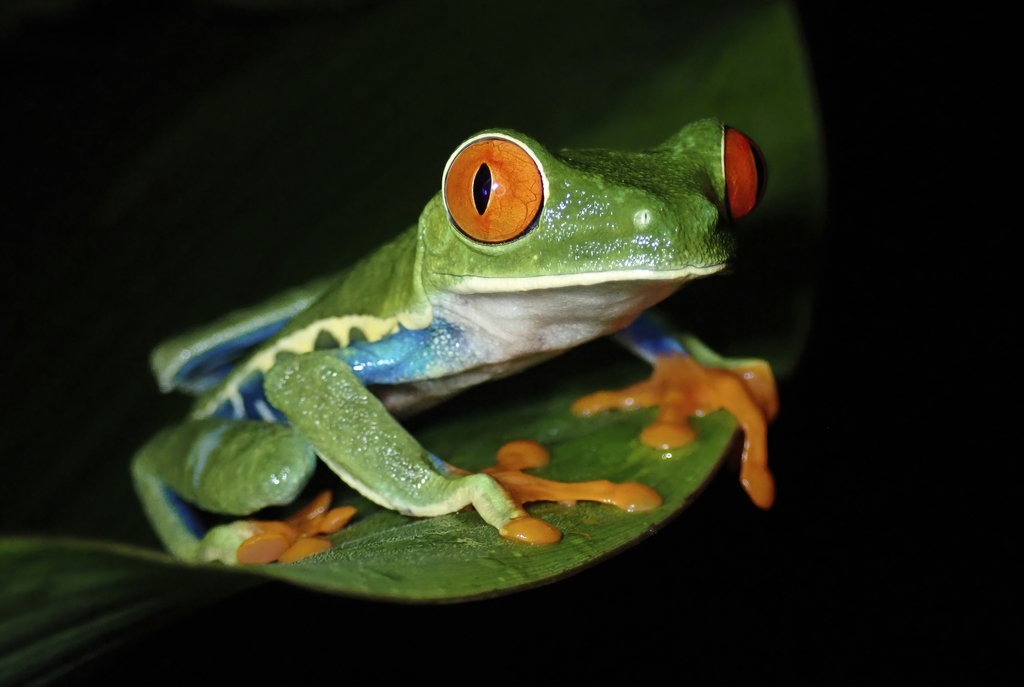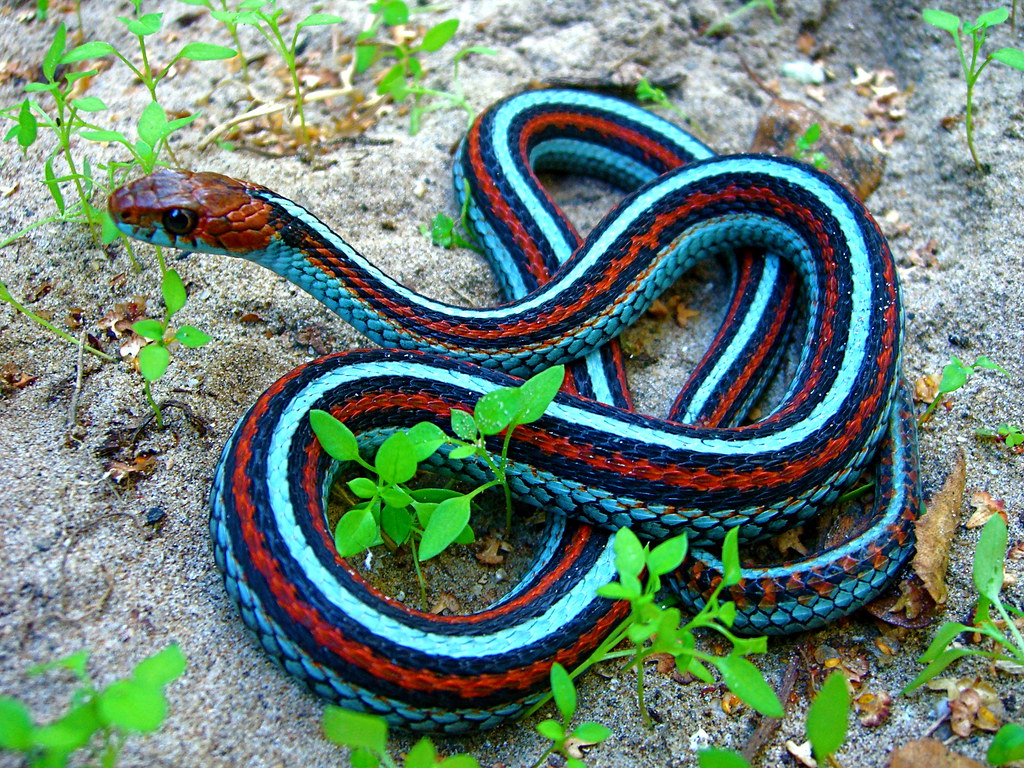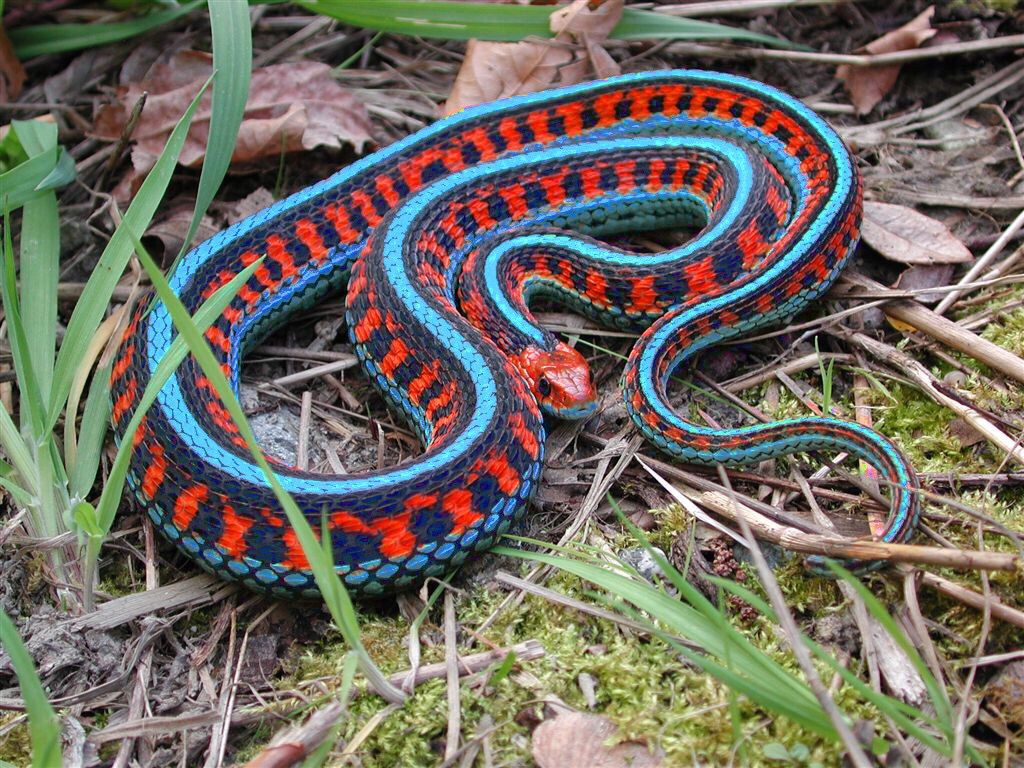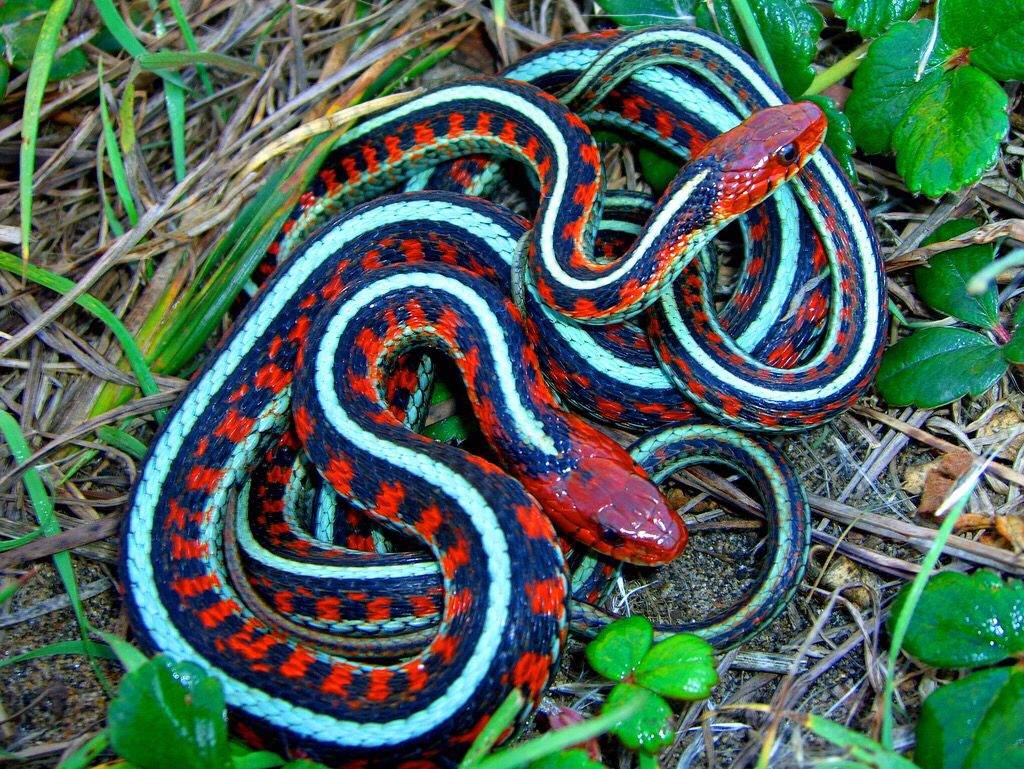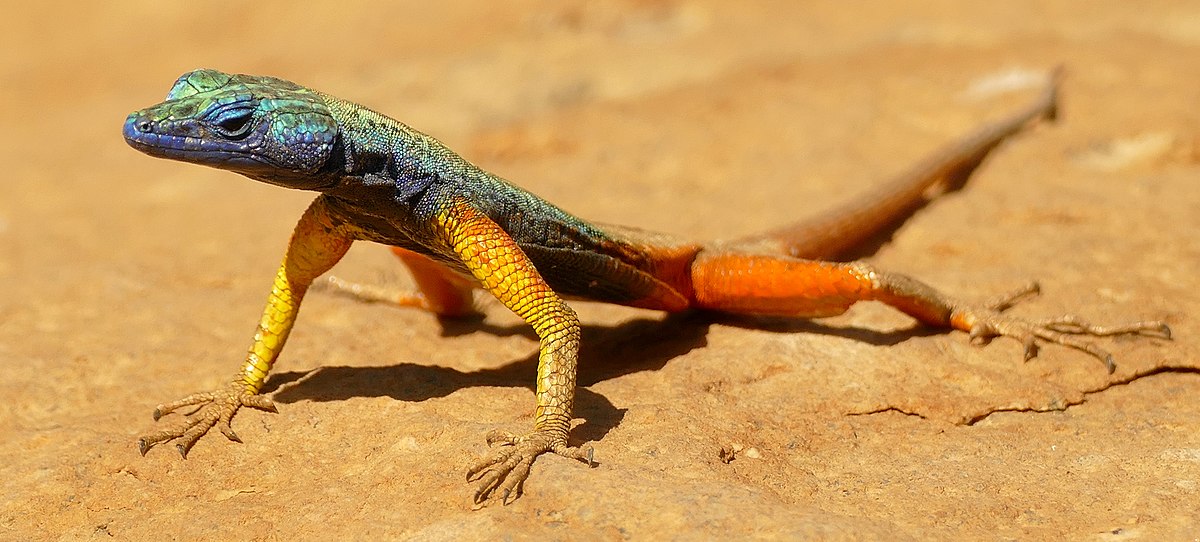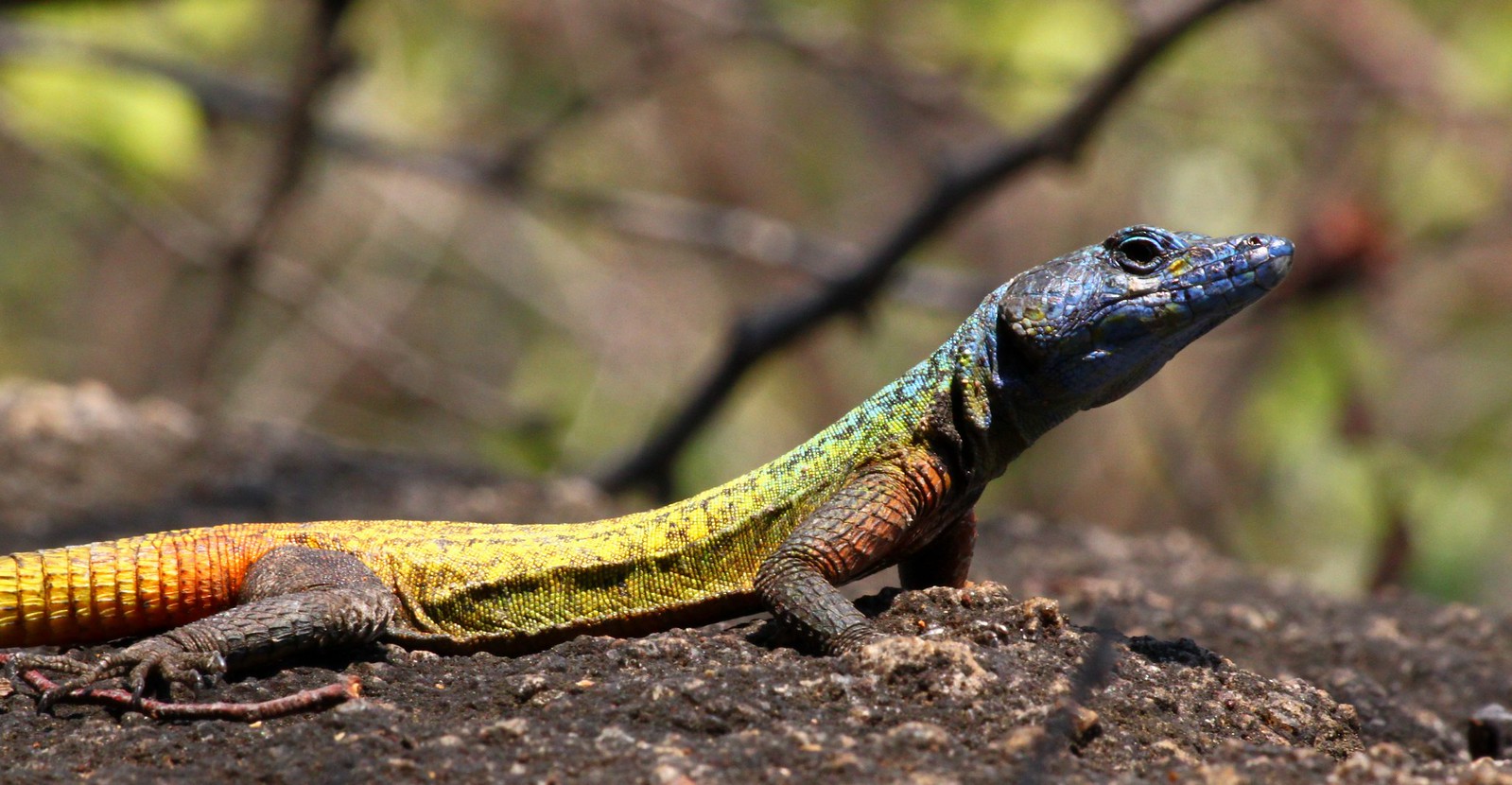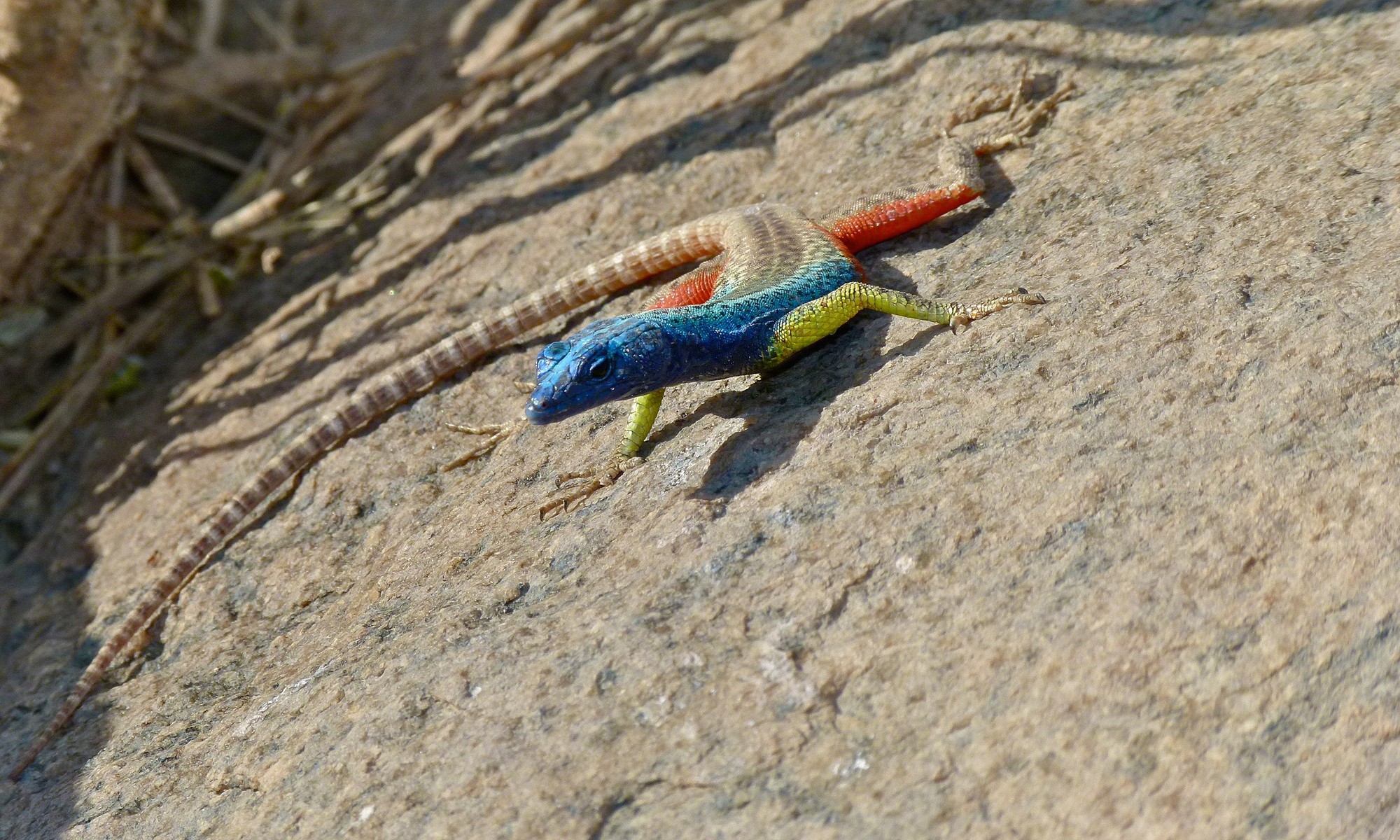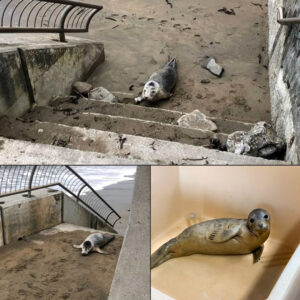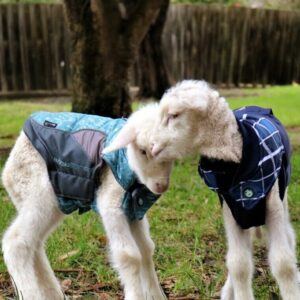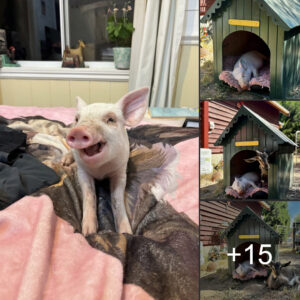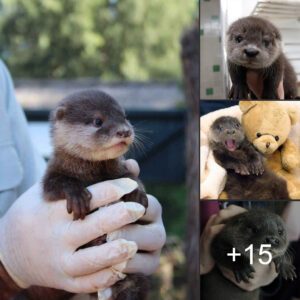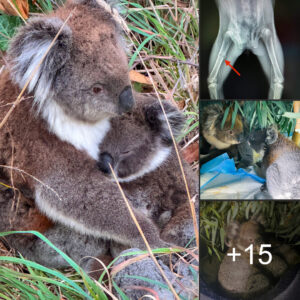1. Coracias caudatus
The Lilac-breasted Citronella (Coracias caudatus), also known as the Red-breasted Citronella or Black-winged Citronella, is a species of bird in the family Coraciidae. This bird is widely distributed in Africa, Asia and the Mediterranean.
Often seen alone or in pairs, it perches conspicuously on treetops, poles or other high vantage points from where it can detect insects, lizards, scorpions, snails, small birds and rodents moving on the ground.
Lilac-breasted sandpipers have the ability to mimic the calls of other birds. They can also turn their heads 180 degrees, which helps them easily detect predators.
The Lilac-breasted Citronella is classified as Least Concern by the International Union for Conservation of Nature (IUCN). However, its numbers are declining due to habitat loss and hunting.
2. Mantis shrimp Odontodactylus scyllarus
Odontodactylus scyllarus, also known as the colorful mantis shrimp, is a species of mantis shrimp in the order Stomatopoda, genus Odontodactylus, widely distributed in the Indo-Pacific region, from Guam to East Africa. This species is known for its vibrant appearance and lightning-fast attack ability.
Mantis shrimp can be considered as the killer in the animal world. They have long been known for their defensive stance like a mantis or a boxer, they also possess the strength to defeat opponents much larger than them, even large crustaceans equipped with armor like sea crabs must “break”. In addition, this animal also possesses a colorful, iridescent beauty like a rainbow from the luminescent substance inside its body, so many people keep them as pets.
Mantis shrimps usually live in “U” shaped caves from 3 to 40 meters deep, near sandy or gravel reefs, they often hide in cracks in the reef and quietly observe any movements outside and often catch prey by sneak attack. The force from their claws can even break coral (which provides shelter for mantis shrimp) or crack aquarium glass. The injuries to their prey are very serious because of the speed at which the mantis shrimp swings its “fists”.
The ancient Assyrians called the mantis shrimp the sea locust. In Australia, they are known as “Prawn killers” and European and American fishermen have nicknamed them “Thumb splitters” because they can tear the skin off fingers if not careful when removing them from nets, and in rare cases, mantis shrimp can break aquarium glass with a single blow of their pincers.
3. Mandrillus
The Mandrillus, also known as the Mandrill, is a species of monkey in the Old World monkey family, found primarily in West and Central Africa. It is known for its colorful fur, bright red nose, and complex social lifestyle.
Mandrills are large monkeys, with adult males reaching up to 90 cm (3 ft) in length and weighing up to 50 kg (110 lb), with females being slightly smaller. They have thick fur that comes in a variety of colors, including green, yellow, orange, red, and blue. This bright coloration helps them communicate and attract mates.
Mandrills have bright red noses, especially in males. The noses are wrinkled and swollen, and can change color depending on the monkey’s mood and health. Mandrills are social animals, living in groups of up to 200 individuals. Groups are dominated by males, who use their red noses and loud calls to attract females. Mandrills are omnivorous, eating fruits, leaves, insects, and small animals. Reproduction: Mandrills have a gestation period of about 230 days and give birth to one young. The young are
The Mandrill is listed as Near Threatened by the International Union for Conservation of Nature (IUCN). Several conservation efforts are being made to protect the monkey, including habitat protection and public awareness raising.
4. Red-eyed tree frog Agalychnis callidryas
The red-eyed tree frog (Agalychnis callidryas) is a species of frog in the family Agalychidae, widely distributed in Central and South America. This frog is known for its colorful appearance, especially its bright red eyes, and its ability to climb trees.
This frog is green on its back with black and white spots, and white or cream on its belly. Its eyes are bright red, especially in males. This bright coloration helps camouflage it in its rainforest habitat and warns predators of the poison on its skin.
Red-eyed tree frogs are nocturnal animals, spending most of their time in trees hunting for prey. They eat insects, spiders, and other small animals. Red-eyed tree frogs are also social frogs, living in small groups.
Agalychnis callidryas is a unique and colorful frog that plays an important role in tropical forest ecosystems. However, its population is declining due to habitat loss and the pet trade. Conservation measures are needed to protect this frog.
5. Thamnophis sirtalis tetrataenia
Thamnophis sirtalis tetrataenia, also known as the four-banded garter snake, is a subspecies of the common garter snake (Thamnophis sirtalis), found primarily in coastal areas of northern California, United States. This snake is known for its colorful scales and ability to adapt to a wide variety of habitats.
The four-banded garter snake is a medium-sized snake, measuring 51–137 cm (20–54 in) in length, with males typically being smaller than females.
The four-banded garter snake is a carnivore, hunting mainly frogs, toads, fish, insects and earthworms. It is mainly active during the day and can swim well. The four-banded garter snake is a relatively docile snake and rarely attacks humans.
The four-banded garter snake lives in a variety of habitats, including forests, grasslands, swamps, and coastal areas. They are often found near water sources such as streams, rivers, and lakes. The species is listed as Least Concern by the International Union for Conservation of Nature (IUCN). However, their numbers are declining due to habitat loss, pollution, and climate change.
6. Platysaurus Broadley
Platysaurus broadleyi, also known as Broadley’s rock lizard, is a species of lizard in the family Platysauridae, found in the rocky barrens of South Africa. This lizard is known for its colorful scales and climbing ability.
Broadley’s rock lizards are medium-sized, measuring about 20–30 cm (8–12 in) long, with males generally larger than females.
Broadley’s rock lizards are carnivores, hunting mainly insects, spiders and small lizards. They are mainly active during the day and are excellent climbers. Broadley’s rock lizards are relatively docile and rarely attack humans.
Broadley’s rock lizards live in rocky, barren areas with plenty of rock crevices and cliffs to shelter them. They are typically found at elevations between 1,500 and 3,000 metres (4,900 and 9,800 feet). Platysaurus broadleyi is a unique and colourful lizard with a highly adaptable body. This lizard plays an important role in the ecosystem, but its numbers are declining and it needs to be protected.
